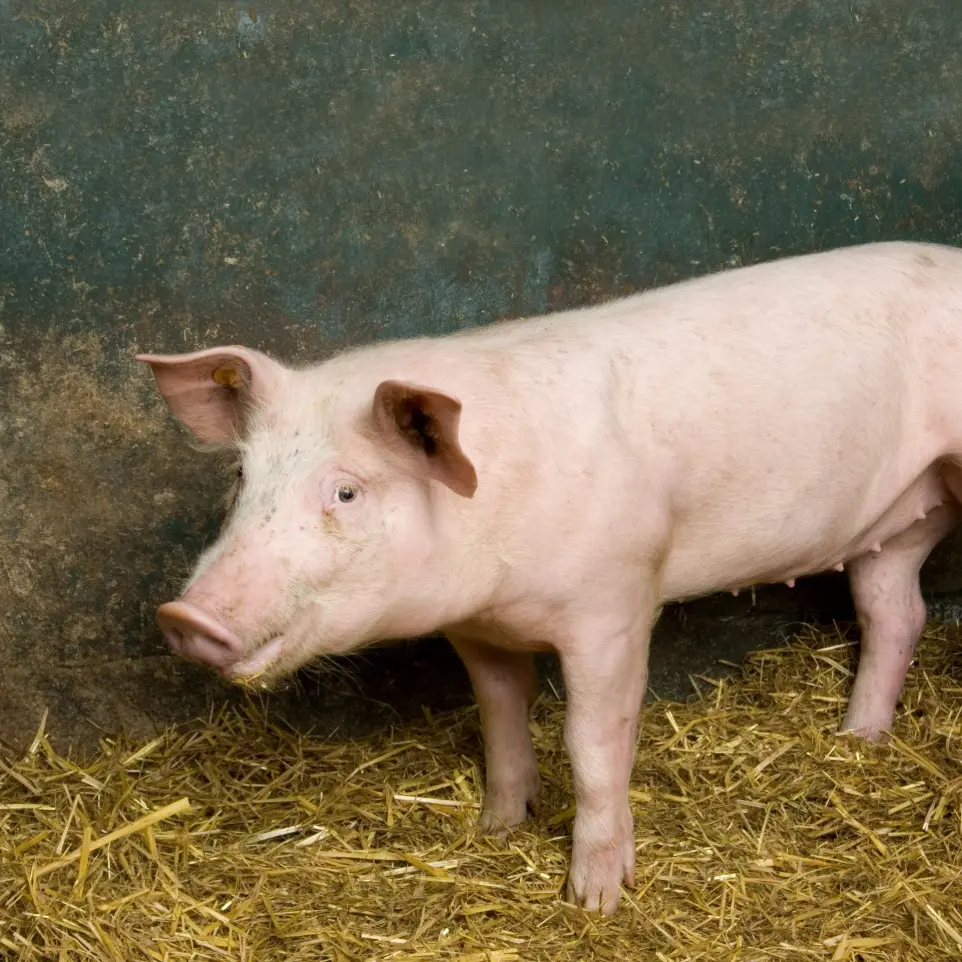We have developed a second generation porcine 70-mer oligonucleotide-microarray comprised of 20,400 oligos. Probes were designed by comparison of pig ESTs to phylogenetically defined vertebrate proteins. Alignment to protein clusters provides for exclusion of chimeric ESTs, distinction between orthologs and paralogs, and minimization of probe redundancy. After grouping ESTs with homologous proteins, sequences were pre-clustered with MEGABLAST and assembled using CAP3. Porcine contigs were also aligned to bovine EST contigs and the bovine genome to further minimize redundancy. Probe design was prioritized by: 1) alignment of clusters/sequences to proteins, 2) number of ESTs in clusters, 3) proximity to the carboxy terminus of orthologous proteins, and 4) optimal Tm and specificity. Probe orientation was confirmed by comparison to RefSeq, demonstrating correct orientation of probes designed against 18,244 clusters. Probes were designed against both strands for 300 clusters with evidence supporting both orientations. The probe set was further supplemented by designing probes against 198 unrepresented porcine RefSeq genes and 1044 TIGR porcine consensus sequences matching bovine RefSeq transcripts with unambiguous directionality. Controls include probes designed to monitor the stringency of hybridization; with six mismatch probes (1, 2, 3, 5, 7, 10 mismatches) designed against 60 contigs with the highest EST count. Negative controls (60 probes) correspond to scrambled sequence without representation in the bovine genome or pig EST databases. An additional 214 probes were designed against pig contigs with 100% identity over 70 bases with a bovine contig, providing cross-species positive controls. All probes were annotated using descriptions of homologous proteins, including Gene Ontology.








